Article reposted from Fresh Energy. View the original article here.
By Anjali Bains | July 23, 2020
Minnesota is poised to pass Clean Cars Minnesota, a standard that would reduce climate change-causing air pollution and increase customer choices.
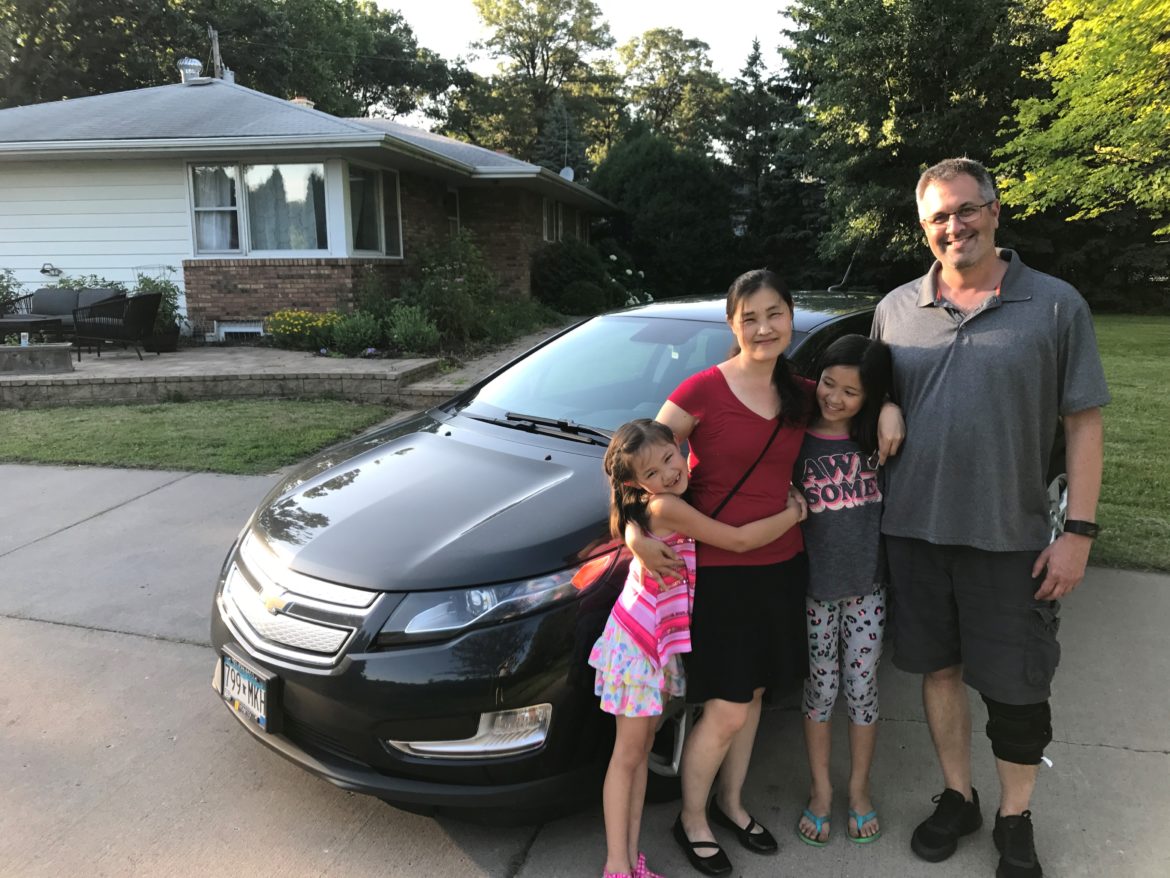
Photo Credit: MPCA
In a Nutshell:
- Clean car standards would benefit Minnesota because they both reduce pollution and provide customers with more vehicle buying choices.
- Due in part to a misinformation campaign by opponents of Clean Cars Minnesota many Minnesotans are confused about what the standards would and would not do.
- Clean car standards are currently going through a “rulemaking” process with the Minnesota Pollution Control Agency and the public has a chance to weigh in.
Jump to Section:
- Why Clean Cars Minnesota?
- What is Clean Cars?
- What Clean Cars Does NOT Do
- Why Would Anyone Oppose Clean Cars?
- States Can Choose
- Why Rulemaking?
- What’s Happened So Far and What’s Next?
- How to Speak Up
In late 2019, Governor Walz announced that Minnesota would be joining 14 other states and the District of Columbia in adopting “clean car standards,” which are regulations and incentives for the auto industry aimed at reducing pollution and giving customers more choices. He dubbed this new initiative “Clean Cars Minnesota” and directed the Minnesota Pollution Control Agency (MPCA) to lead the rulemaking process which would explore a standard that’s right for Minnesota. As a strong supporter of clean car standards, Fresh Energy has been publicly advocating for adoption of these standards in Minnesota for nearly two years and we’re ecstatic to see the process moving forward.
As the first Midwest state to embark on this journey to clean up the new cars and passenger trucks being sold in the state, these standards are a big deal and a great first step toward a healthier Minnesota. However, in the intervening year since the Governor’s announcement, a bevy of false claims from opponents has left more than a few folks scratching their heads and asking: what exactly is Clean Cars Minnesota?
Why Clean Cars Minnesota?
Transportation is the largest emitter of greenhouse gases (GHGs), both nationally and in Minnesota, making the sector a significant contributor to climate change, which is already affecting Minnesotans. Our winters are warming 13 times faster than our summers, and extreme weather is becoming more frequent, which is threatening the health and wellbeing of urban and rural communities alike. Northern Minnesota is particularly at risk – it has warmed almost twice as much as the national average. If we take no action, Minnesota is on track to lose our Northern boreal forests by 2070.
As the Pathways to Decarbonization report published by the Minnesota Department of Transportation (MnDOT) in 2019 laid out, multiple initiatives are needed to bring transportation GHG emissions in line with the state’s goal of an 80% reduction in such emissions from 2005 levels by 2050. These goals were set out by the Next Generation Energy Act of 2007 and signed into law by then-Governor Tim Pawlenty. Adopting clean car standards is a significant tool for reducing GHG emissions from passenger vehicles, which comprise almost 60% of all such emissions from the transportation sector.
But climate impacts are not the only reason clean car standards are urgently needed. Human health is also at stake. Air pollution in the form of fine particulate matter (PM2.5, also known as “soot”) and ground-level ozone harms lungs and hearts especially when breathed in regularly, which is a burden that falls disproportionately on low-income communities and those of color. Rural communities are also at risk, with a recent study by the MPCA concluding rates of death attributable to air pollution were higher in rural areas than urban. Transportation is a major contributor of such air pollution and adopting clean car standards is a step in the right direction toward a healthier state.
Finally, consumer choice is limited without clean car standards. Those who are interested in buying or leasing an electric vehicle, be it a hybrid or full battery one, cannot find all available makes and models in Minnesota. In fact, such prospective vehicle customers may not find even one electric vehicle on a dealer lot. This partly because automakers choose to not deliver their electric vehicles to states without clean car standards. States that do adopt the standards, however, have more electric options, as the Sierra Club’s REV UP report concluded in November 2019. Clean Cars Minnesota will give consumers the options they want so they can decide what’s best for them.
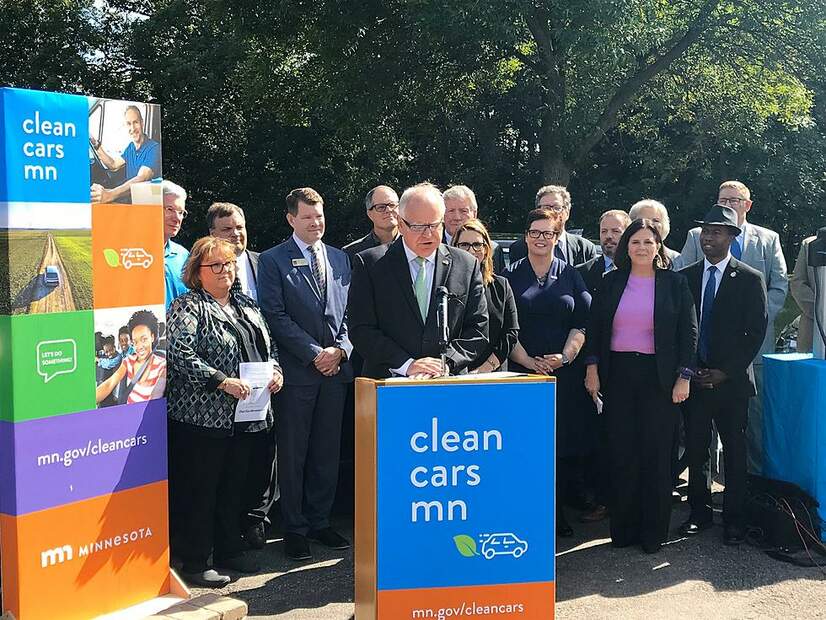
What is Clean Cars Minnesota?
Clean Cars Minnesota refers to the rulemaking underway at the MPCA to adopt clean car standards here in Minnesota. Clean car standards are written such that once adopted, there is a two-year delay before enforcement begins. (More on this and the general rulemaking process further below.) They apply to automakers only and aim to reduce GHG and other polluting emissions from passenger vehicles in two ways:
- By reducing tailpipe emissions from new, primarily gasoline-powered or “internal combustion engine” (ICE) cars and light-duty trucks; and
- By increasing the number of electric vehicles (EVs) for sale.
Reducing tailpipe emissions: Also referred to as the “Low Emission Vehicle” standard, LEV rule, or tailpipe emissions standards, this part of the clean car standards seeks to decrease the GHG and other polluting emissions from the sales of new conventional cars. Such reductions primarily take place through better fuel economy, which means consumers can enjoy fuel savings while the broader public benefits from cleaner air.
The rule is also flexible – i.e. there are different requirements for different vehicle sizes. This means that a pick-up truck does not have to meet the same emissions requirement as a compact car. Automakers are instead held to “fleet” averages, which allows them to mix and match what vehicles they need to sell to meet the LEV standard.
Remarkably and perhaps little known is that the LEV rule currently matches federal vehicle emissions standards, due to negotiations between the Obama Administration, automakers, and California in 2009 following the automaker bailout to create One National Program. However, the federal administration announced a rollback of these federal vehicle emissions standards in March 2020, making the need to adopt clean cars standards all the more urgent.
Increasing electric vehicles for sale: Also referred to as the “Zero Emission Vehicle” standard or ZEV rule, this part of the clean car standards aims to increase the number of EVs that automakers offer for sale in Minnesota. Due to the high demand for EVs in Europe, China, and U.S. states that have already adopted clean car standards, automakers often don’t bother to send their EVs to non-clean car states because their supply is already spoken for. This leads to limited options for prospective EV buyers here in Minnesota, and even requires some to head out of state to buy the EV they want. Clean Cars Minnesota would mean that more EVs are sent here, thereby increasing consumer choices for those who want an EV.
As with the LEV rule, the ZEV rule has flexibility built-in to give automakers room to comply. The ZEV rule requires automakers to produce a certain number of “credits” to comply. Credits are calculated based on EV type (plug-in hybrid or battery electric) and battery range. Full battery electric (e.g. Chevy Bolt) vehicles get more credits than hybrids (e.g. the discontinued Chevy Volt), and EVs that can travel more miles on one battery charge get more credits than those that go fewer miles. With this system, one battery electric vehicle can generate up to four ZEV credits.
ZEV credit requirements increase each year and are set as a percentage of an automaker’s ICE sales. This allows compliance obligation to fluctuate with general market conditions. In other words, if an automaker sells fewer gasoline-powered vehicles in one year, the number of ZEV credits required to comply that year also decreases. ZEV credits can also be bought and traded between automakers, who may choose to “bank” extra ZEV credits for future use. Finally, states who adopt clean cars standards generally allow “early action” credits, which are ZEV credits earned by automakers for electric vehicle sales before the clean car standards go into effect. Since such credits are accrued prior to any compliance obligation, automakers may also “bank” them for future use.
Clean Cars Minnesota refers to the process of adopting the LEV and ZEV standards above. As written, these standards will reduce vehicle emissions and increase the number of EVs for sale in Minnesota each year until 2025, after which MPCA would need to lead a new round of clean car rulemaking.

What Clean Cars Minnesota Does Not Do
While Clean Cars Minnesota will do a lot for Minnesotans in the way of climate, health, and choice, there are a few key things it will not do.
Clean Cars Minnesota will not impact farming equipment. Clean Cars Minnesota only affects new passenger cars and light-duty trucks for sale. It does not apply to heavy-duty vehicles like farming equipment or big rigs.
Clean Cars Minnesota will not stop you from buying a gasoline car nor make you buy an EV (but it will give you more choice). Clean Cars Minnesota does not require anyone to buy an EV – in fact, under its most stringent form, only about 8% of new vehicle sales in Minnesota would be electric. Nothing in the clean car standards will stop customers who want Chevy Silverados or other pick-ups to buy them. However, the standards will increase the availability of different makes and models on sales lots in Minnesota. In fact, adopting Clean Cars Minnesota would help ensure access to electric versions of some the most popular pick-ups, like the electric Ford F150 expected to come out next year.
Clean Cars Minnesota will not make owning a gasoline-powered car or pick-up more expensive. The LEV standard of Clean Cars Minnesota, which applies to gasoline-powered passenger vehicles, will save consumers far more money at the pump than the program may cost by making available cleaner and more efficient vehicles. As with other technology improvements, such as those that increase safety, there will be a small impact to the upfront cost of new vehicles. However, in this case, the improvement will save drivers more money than it costs them. An analysis conducted by the Colorado Air Quality Control Commission found that the average vehicle customer can expect net savings of over $1,600 over the life of a LEV-compliant gasoline-powered car. And for those who choose to finance their new vehicle purchase, as 86% of consumers currently do, savings are realized on day one.
Clean Cars Minnesota is not just a metro-driven initiative. Minnesotans living outside the Twin Cities Metro Area want Clean Cars Minnesota too. And people in Greater Minnesota stand to benefit the most from more fuel-efficient cars and trucks. Why? Because driving longer distances mean higher fuel costs, which means cost savings from more fuel-efficient cars and trucks accrue more quickly for rural residents.
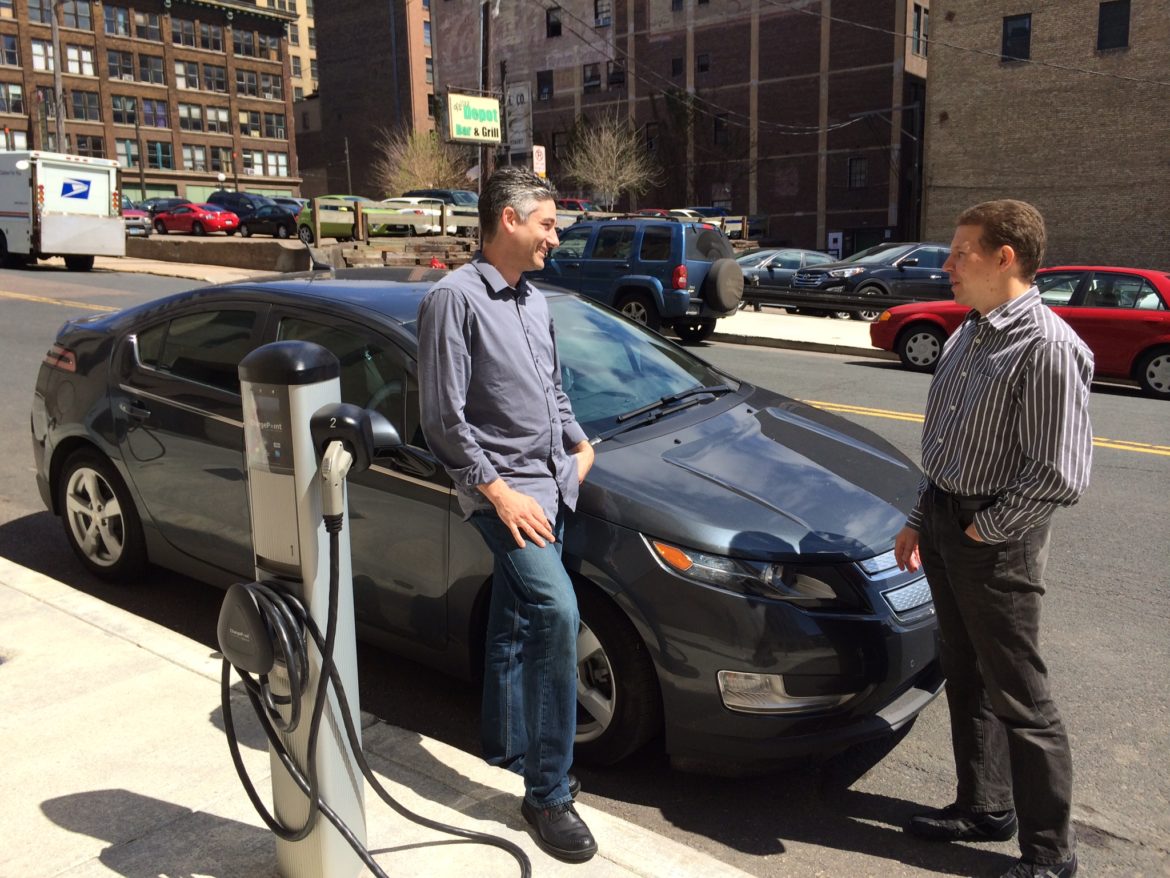
This All Sounds Great. Why Would Anyone Oppose Clean Cars?
Opposition to Clean Cars Minnesota has stemmed from those who traditionally oppose anything that reduces oil consumption i.e. Big Oil, and general misinformation and anxiety over how the rule will be implemented. While opposition from Big Oil has been explained elsewhere, two topics we hear often from other opponents are addressed below.
Air quality is “fine” here in Minnesota.
Some opponents believe clean car standards were meant for states that have air pollution at levels that the US Environmental Protection Agency (EPA) deems as “nonattaintment” per National Ambient Air Quality Standards (NAAQS). This is inaccurate for two reasons:
- NAAQS don’t include carbon pollution. Air quality metrics from the US EPA do not include GHGs i.e. “carbon pollution” in their assessment. High concentrations of GHGs were found to endanger public health and welfare by the US EPA in 2009, and new motor vehicles were found to be a major source for them. This paved the way for restricting GHG emissions from passenger vehicles and is a major reason why the clean car standards exist – to reduce carbon pollution in both gasoline-powered and electricity-powered vehicles.
- Low levels of air pollution can still harm human health. In 2019, the MPCA published a report on the status of our air quality called “The air we breathe”. It states that some levels of air pollutants that may fall below NAAQS can still harm health significantly, a finding backed up by research that linked the prevalence of diabetes with higher levels of soot. Closer to home, the MPCA’s 2019 “Life and Breath” report shows air pollution may contribute to 4,000 deaths each year in Minnesota, with higher rates of death from air pollution in rural areas than urban areas.
Some auto-dealerships don’t want change.
Other opponents are worried that adopting clean car standards here will lead to dealerships holding cars that their customers will not want. But Minnesotans do want cleaner cars. A 2019 Consumer Report survey found 66% of prospective Minnesotan car buyers want more electric options. This includes rural residents as mentioned above, who stand to benefit the most from both electric and more fuel-efficient vehicles.
It is also worth noting that 14 other states and the District of Columbia have already adopted clean car standards, and that federal vehicle emissions standards have mirrored the LEV portion of clean car standards until this year, making Clean Cars Minnesota a tried-and-true set of standards. But perhaps the most important point is that Clean Cars Minnesota will not require all dealers to sell electric vehicles. It is estimated only 8% of new passenger vehicles sold by 2025 will be partly or fully electric under a Clean Cars Minnesota scenario. This means many auto-dealers will likely not need to hold electric vehicles.
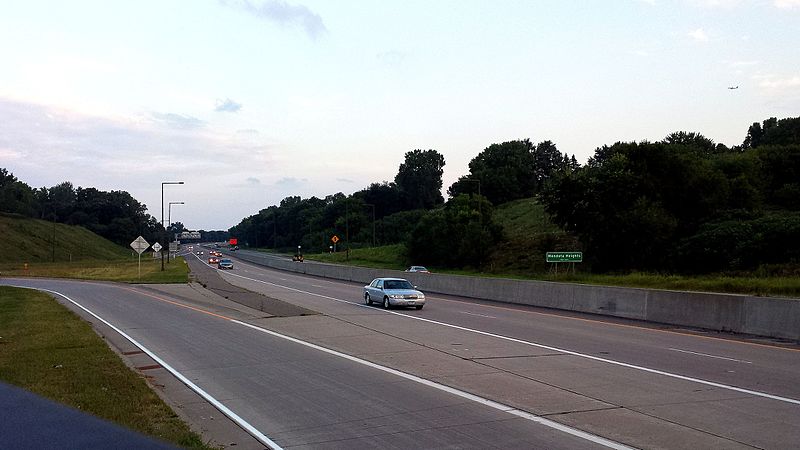
States Can Choose Between Federal Standards or Clean Car Standards
The ability for each state to choose which set of emissions standards to enact is an assertion of states’ rights and choice. Fourteen other states plus the District of Columbia have chosen to adopt clean car standards, with many doing so 10 years ago. Minnesota isn’t even the only state considering adopting clean car standards at this time. States like New Mexico and Nevada are also exploring how these standards could benefit their residents in terms of cleaner air, cost savings, and more vehicle choices. So how are two different sets of standards possible?
Under the federal Clean Air Act, two emissions standards were established: those set by the federal government and those created by California. Minnesota would be joining 14 other states and the District of Columbia in choosing the firmer standards created by California over the ones from the federal government, which were recently rolled back despite evidence by its own agency that doing so would do more harm than good for Americans in terms of lost jobs and higher fuel costs.
It’s important to note that adopting Clean Cars Minnesota does not sign away our state’s authority to another state. Clean Cars Minnesota refers specifically to a set of standards called the “Advanced Clean Cars” standards, which comprise of the LEV III rule and ZEV rule, and which apply to model year 2012 through to 2025. The mechanics of Minnesota’s rulemaking are complex, but they do not allow any future rules proposed and adopted by the California Air Resources Board (CARB) to be automatically applied here. Any clean cars rule that CARB proposes for 2026 and after will need to be positively affirmed by Minnesota through a public rulemaking process once again before it can take effect here.

But Why Rulemaking At All?
Rulemaking is one of the many civic tools available to enact policy that helps and protects Minnesotans and includes significant public outreach across Minnesota as part of its process. While rulemaking is a tool of the Executive Branch, it derives its legal authority from statutes passed by the legislature. Minnesota Statute 116.07 lays out the prerogatives and powers of the Minnesota Pollution Control Agency (MPCA). Specifically, in Subdivision 2 “Adopting Standards,” it states “the agency shall also adopt standards of air quality, including maximum allowable standards of emission of air contaminants from motor vehicles…”. This power, as granted by the legislature, enables the MPCA to conduct a rulemaking to adopt clean car standards in Minnesota. More on the specifics of rulemaking in Minnesota can be found here, and ways to get involved can be found below.
What’s Happened So Far?
The rulemaking, which began in Fall 2019, has multiple opportunities for Minnesotans to make their voices and concerns heard. A series of public meetings across Minnesota were held by MPCA staff in October and November of 2019 to hear Minnesotans’ thoughts on the initially proposed clean car rulemaking. The MPCA also opened an informal comment period that gathered online comments too. More than 2,000 comments were received, with the majority overwhelmingly supporting the rulemaking as necessary for reasons of health, climate, and consumer choice.
What’s Next?
Opportunities for the public to engage with and inform the clean cars rulemaking process will continue in fall of 2020 when publication of the draft rule will kick off the formal rulemaking and another public comment period. COVID-conscious public hearings will also be held to provide a forum for oral or written testimony, and will be designed to allow participation from all across Minnesota. All this public input will be considered by the Administrative Law Judge (ALJ) overseeing the rulemaking who will determine whether the rule benefits Minnesotans more than its implementation may cost. The ALJ will then issue a report of their findings to the MPCA. If the ALJ recommends approval with no or minor modifications, the MPCA will finalize the rule and send it to the Governor’s office for approval. Finally, the Commissioner will sign an Order Adopting Rules and publish a Notice of Adoption in the State Register, signaling the clean car standards officially adopted by Minnesota.
But wait! Not so fast. The clean car standards were drafted with flexibility in mind and provide for two years between adoption and enforcement to allow automakers and auto-dealers time to adjust. Given delays due to COVID-19, the earliest that Clean Cars Minnesota rulemaking could conclude is early 2021, meaning that the earliest the enforcement could take place is 2024. Another reason that we need to act now to get these vehicle emissions standards passed, so Minnesotans can reap their health, climate, and economic benefits as soon as possible.
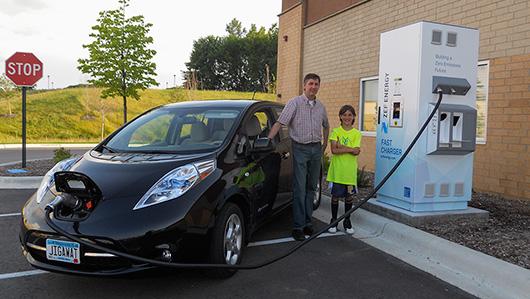
How to Speak Up for Clean Cars
Clean Cars Minnesota is a bold step forward on the road to cleaner air for Minnesota communities and climate solutions for our planet. Fresh Energy believes deeply in clean car standards and has been actively supporting this rulemaking process through rigorous testimonies at the Minnesota Legislature, engaging Minnesotans in the rulemaking process, and supporting the Walz Administration and the MPCA. We are working hard to ensure that sound, science-based analysis is considered every step of the way. However, there is no guarantee that Clean Cars Minnesota will become a standard. Minnesotans who want clean air, clean water, and progress on climate must make their voices heard. Stay tuned to Fresh Energy’s Facebook and Twitter for the most up to date news on how you can plug in to the rulemaking process and contribute your voice to this movement. You can also sign up for our listserv and get a notification once the rulemaking process is open.